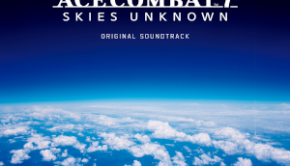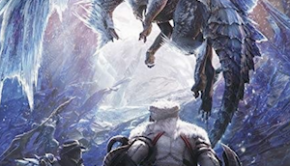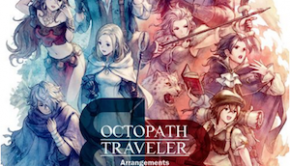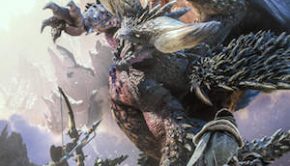Street Fighter V Original Soundtrack
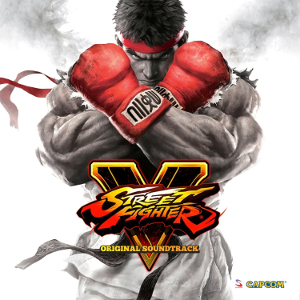 |
Album Title: Street Fighter V Original Soundtrack |
| Record Label: Suleputer (JP Edition); Sumthing Else (US Edition) |
|
| Catalog No.: CPCA-10396; SE-3167-2 |
|
| Release Date: March 9, 2016; June 28, 2016 |
|
| Purchase: Buy at CDJapan | Buy at Sumthing.com |
Overview
Over the years, the Street Fighter series has seen a variety of music styles and a plethora of different composers. Street Fighter V is no exception to this tradition featuring Masahiro Aoki, known for his work on the Sengoku Basara series, as lead composer alongside former Namco composer gone freelancer Keiki Kobayashi, Street Fighter IV composer Hideyuki Fukasawa, and guest contributions by Zac Zinger, known for his work with Capcom on a variety of various arrange albums they have released, and Takatsugu Wakabayashi, known for small contributions to series like Sengoku Basara and Yakuza. How does this multi-composer approach compare to the legacy of the previous soundtracks in the series?
Body
Starting with the returning composer, Hideyuki Fukasawa, his music certainly mirrors his contributions to Street Fighter IV, for better or worse, and was responsible for a number of stage and character themes, both new and returning. In Street Fighter V, the stage music has two renditions, one for first round (and subsequent rounds that are not the final round) and the final round. Fukasawa’s “Bustling Side Street -China Stage-” is electronic in tone, but also features a bit of a grungy rock sound and female vocal samples. The problem with this tune is that it gets quite repetitive, quite fast. The “Bustling Side Street Alternative -China Stage-” is more electronically oriented and is slightly darker in tone, perhaps to emphasis the final round, but is even more repetitive, which makes for a very boring listen. “Underground Arena -Russia Stage-” is a dance tune with a fun melody and vocoder usage and is quite like Street Fighter IV in style. “Underground Arena Alternative -Russia Stage-” is a bit brighter in tone, its vocoder implementation a bit more distorted, and incorporates some nice piano touches, while retaining its dance sound. Collectively, it’s one of Fukasawa’s more successful rehashes of the Street Fighter IV sound. Fukasawa’s take on the Brazil music is perhaps his best stage music on the soundtrack. “Hillside Plaza -Brazil Stage-” is a fun mix of dance and brass that gives a very festive vibe, thanks to the uplifting melody, vocal samples, and excellent melody. “Hillside Plaza Alternative -Brazil Stage-” is reminiscent of Fukasawa’s “Solar Eclipse” music from Street Fighter IV, featuring a much more ethereal synth tone mixed with an excellent dance accompaniment that fits the piece quite well. Fukasawa is also responsible for the training stage, “The Grid,” which is a fairly repetitive electronic tune that doesn’t really stand out at all.
On the character front, Fukasawa was responsible for four themes, two returning and two newcomers. Due to the divisive nature of Street Fighter IV’s soundtrack, it did garner a lot of disdain for its approach to the music. “Theme of M. Bison” in the West, or “Theme of Vega” in Japan, is, without a doubt, the quintessential tune that embodies everything negative people thought about Fukasawa’s score for Street Fighter IV. It’s an extremely repetitive tune that overstates its welcome almost immediately with its basic electronic accompaniment repeated ad nauseum. It also features a fairly strong rendition of the melody done in both a mix of electric guitar and synth, but it’s extremely hard to appreciate when the accompaniment is competing for your attention the entire time. “Theme of Cammy,” on the other hand, is more successful. While I still enjoy Fukasawa’s former take on it, this version, with its drum rhythm, piano, and softer electronic approach make for an entertaining listen. Of the two newcomers, “Theme of Rashid,” even amongst other newcomer themes, is certainly the fan favorite. It’s a skillful blending of drum and bass and Middle Eastern elements and boasts an excellent melody. The vocal samples speaking his name are a bit on the kitschy side, but it fits the character and tune quite well. His other character theme, “Theme of Laura,” on the other hand, is one that, even three months later, I’m not sure how I feel about it. I find the brass to be really offputting, but the accompaniment is quite nice as are the slight rock elements. In my opinion, it’s the worst of the new character themes.
Both Takatsugu Wakabayashi and Zac Zinger both play a small part in the soundtrack with Wakabayashi responsible for the two variations of the Japan stage music and Zac Zinger responsible for the two variations of the New York stage music and an arrangement of “Theme of Zangief.” Wakabayashi’s “Kanzuki Estate -Japan Stage-” is an excellent blend of epic orchestral elmenets with traditional Japanese instrumentation. The melody is quite catchy and the driving rhythm really brings everything together. It’s truly outstanding. “Kanzuki Estate Alternative -Japan Stage-” is a more intense sounding rendition with more focus on the Japanese elements heard in the other version. When it comes to Zac Zinger’s “City in Chaos -New York Stage-,” it’s very hard for me to describe as I find it extremely unique. It certainly borrows from Zac Zinger’s extensive knowledge of jazz music, but at the same time, it doesn’t sound particularly jazzy. It’s a very dramatic tune with an excellent melody driven by brass and piano. It also incorporates an excellent guitar line that really helps bring a different sound to the overall atmosphere. “City in Chaos Alternative -New York Stage-,” to me, is a bit more jazzy in influence, but certainly focuses more on a rock/orchestral approach that helps a more dramatic flair to the piece, but at the same time, some more beauty compared to the original, particular in the strings. His sole character theme, “Theme of Zangief,” is a really dramatic/heroic interpretation that is full of brass and strings. To me, it really fits the character quite nicely and is an excellent arrangement that utilizes all the instruments quite well, from the acoustic guitar to the aforementioned brass and strings. It’s strong contributions from these two composers that make me wish they both had larger roles in the crafting of the Street Fighter V soundtrack.
Former Namco employee gone freelance Keiki Kobayashi contributes a number of stage and character themes. “Forgotten Waterfall -New Zealand Stage-” is a beautiful woodwind driven piece with choir accents and acoustic guitar that really has a rustic, countryside quality to it that helps bolster its fantastic melody. “Forgotten Waterfall Alternative -New Zealand Stage-” is a more upbeat rendition with a more strings driven melody that manages to retain the same quality as the original. On the polar opposite spectrum in terms of style, “Shadaloo Base -Shadaloo Stage-” certainly is reminiscent of Namco’s more modern Tekken soundtracks with its extremely fast and driving electronic tune. It is a bit repetitive on the whole, but is quite engaging at the same time. The subtle softer synth cues and acoustic elements throughout the piece due give it a bit of musical texture. “Shadaloo Base Alternative -Shadaloo Stage-,” on the other hand, is a more dramatic transformation, featuring a darker tone, a slower tempo, while still managing to remain upbeat, that gives a bit more focus to the synth and acoustic elements heard in the first version. “Lair of the Four Kings -Boss Stage-” is an orchestra meets electronic hybrid that focuses on choir to create an excellent melody with a highly engaging sound. The “Lair of the Four Kings Alternative -Boss Stage-” removes the electronic elements and ups the ante a bit in terms of drama with a darker choral sound.
When it comes to character themes, Kobayashi was responsible for two remixes and the remaining three newcomer themes. His rendition of “Theme of Chun-Li” is an orchestral rendition with a strong Chinse influence. It’s a fairly standard approach with no frills, but is an enjoyable piece nonetheless. “Theme of Nash” is certainly the more entertaining of the two and borrows heavily from his past appearances in the series, musically speaking. Opening with a piano rendition of his ending music in Street Fighter Alpha 2, it helps craft a dramatic sound before moving into his theme proper that focuses on gritty guitar lines, drum and bass elements, and orchestral accompaniment. It’s one of Kobayashi’s character theme highlights for sure. “Theme of Necalli” certainly fits his warrior look, featuring dramatic choir, subtle acoustic guitar elements, and heavy brass focus. It has an almost tribal nature to it. His other two themes both take on a jazzier approach. “Theme of Karin Kanzuki” is a jazz oriented piece with some big band sounds, strings, and keyboards. It has a modern, yet classic, sound to it that really works nicely. “Theme of F.A.N.G.,” on the other hand, is more of a quirky jazz tune with some more electronic elements. The quirkiness certainly fits the character and it, too, has a classic sound, thanks to the synth incorporated into the melody.
The lead composer, Masahiro Aoki, was also responsible for stage and character themes, but was also responsible for other miscellaneous tunes, such as the main theme, main menu music, character select, and credits. The main theme, “Street Fighter V” is a nice foreshadow into what to expect from the soundtrack. There is a heavy rock focus but also features some softer acoustic and electronic elements, particularly in the intro. While it may not have as strong or catchy of a melody compared to Street Fighter IV, in my opinion, it is still a quality tune. “Main Menu” also features a blend of all three major elements on the soundtrack: rock, orchestra, and electronic, and features a fantastic melody as well. “Character Select” is an orchestra driven tune with a rock focus. On the whole, it’s an excellent tune with lots of impressive guitar work and a fairly decent melody as well. “Credit Title of Street Fighter V” is an edgy rock tune with a sound that indicates some sort of finality to it that closes out the soundtrack quite nicely.
The two stage themes that Aoki was responsible for were for London and India. “Union Station -London Stage-” is a blend of orchestra and rock that has a great energy and a very uplifting sound. The guitar performance mixed with the catchy hooks makes for an extremely entertaining listen. “Union Station Alternative -London Stage-” is a more rock oriented rendition that incorporates keyboard and some funk elements while the orchestral components heard in the other rendition take more of a backseat to the action. “Apprentice Alley -India Stage-” is my favorite tune on the whole soundtrack. It’s an excellent blend of heavy rock and Indian influences. The lead guitar and heavy metal influence really help give it an edge, but I also find that the Indian elements bring a nice balance to the mix with their softer sound overall. A bit brighter in tone is “Apprentice Alley Alternative -India Stage.” It, too, blends rock and Indian sounds, but there is certainly a stronger focus on the latter. That isn’t to say that the rock is lost. There are plenty of excellent guitar sections in this rendition as well.
When it comes to character themes, Aoki is only responsible for returning characters from throughout the series. “Theme of Ryu” turns the original into an epic orchestral/rock tune that really does the original justice. I also enjoy the various guitar flourishes throughout and the acoustic guitar also makes for a nice touch. “Theme of Birdie,” on the other hand, is a blend of electronic/rock elements. It’s a fun tune with a very 80s sound with its synth lead, although there are some modern electronic influences. “Theme of Ken” is an excellent rock rendition of the original and is quite powerful. While there is some orchestral support, it’s mostly a rock affair. One of my favorite tunes is “Theme of Vega” (or Balrog in Japan) is extremely fitting for the Spanish bullfighter. The blend of Spanish guitar, violins, clapping, orchestra, and piano creates a very elegant theme. While the transition between loops that features choir is a bit out of place compared to the rest of the tune, it is still one of the stronger character themes, despite its simplicity. “Theme of Rainbow Mika” has a more anthemic synth/rock sound to it. Given the wrestling background of the character, the style makes sense, acting like an introduction theme during a fight, but it might be a bit too different from the original for some listeners. Lastly, “Theme of Dhalsim” blends rock and Indian tones, similar to the India stage themes, that makes for an edgy, but faithful, interpretation of the original.
Summary
In the end, the Street Fighter V Original Soundtrack is a strong entry in the series. While some of the music, mainly those composed by Hideyuki Fukasawa, sounds a bit stale, given the style prevalence in its predecessor, there is still a ton of variety to be had in the series, with orchestra, rock, ethnic, and electronic tones all playing a major role. Aoki’s edgy rock tunes, Kobayashi’s versatility, and Wakabayashi and Zinger’s small, but strong, contributions makes for a refreshing listen and ones that fans of the series will most likely enjoy.
Do you agree with the review and score? Let us know in the comments below!
4
Posted on June 13, 2016 by Don Kotowski. Last modified on June 30, 2016.

